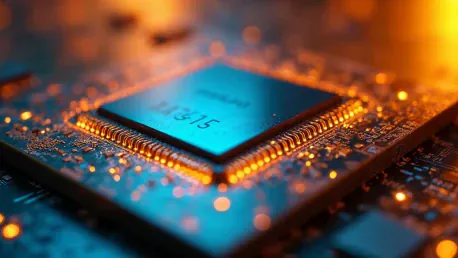The rapid progress of artificial intelligence (AI) is accompanied by soaring energy consumption, posing significant challenges for sustainability. Addressing this issue, researchers in Japan have pioneered a spintronic device that promises to transform AI hardware by significantly reducing power requirements.
Innovation in Spintronic Devices
Harnessing Non-collinear Antiferromagnets and Ferromagnets
The primary focus of the research, conducted by scientists from Tohoku University, the National Institute for Materials Science, and the Japan Atomic Energy Agency, is a novel spintronic device. This device integrates memory and processing functions to mimic the efficiency of the human brain. By utilizing non-collinear antiferromagnets and ferromagnets for the electrical mutual control of magnetic states, the device achieves efficient switching and processing of information with substantially lower energy consumption. Spintronic devices represent a groundbreaking advancement in the quest for low-power AI chips. These devices operate by combining memory and computational tasks, akin to neural networks in the human brain, which could revolutionize AI hardware.
The researchers’ work exploits the magnetic spin Hall effect, leveraging the non-collinear antiferromagnet Mn3Sn to generate spin current that drives ferromagnet CoFeB. This process enables mutual magnetic state switching, which is integral for AI’s synaptic weight operations. The study’s findings are significant, offering a new paradigm for spintronic technology. Unlike traditional devices that switch data between binary states (“0” and “1”), this new spintronic approach allows for electrically programmable switching among multiple magnetic states. This innovation enhances analog switching mechanisms critical in AI neural networks, reflecting the way synaptic weights function.
Proof-of-Concept and Implications
The proof-of-concept demonstrated the precise electrical control over the magnetization states of CoFeB via Mn3Sn, showcasing the potential for multi-state information processing and storage. This allows for the modulation of magnetization in different traces representing various states, efficiently mimicking neural network operations essential for AI. The research, published in Nature Communications on February 5, 2025, underscores a pivotal step towards developing energy-efficient AI chips. It indicates that the electrical mutual switching between antiferromagnetic and ferromagnetic materials can significantly bolster current-programmable neural networks, paving the way for more environmentally sustainable AI technologies.
Concluding their study, the researchers emphasize the need for further reduction in operating currents and enhancement of readout signals to realize practical applications in AI chips. This novel spintronic breakthrough holds promise for dramatically cutting AI’s power needs, mitigating the environmental impact, and advancing AI hardware to new levels of efficiency and sustainability. In summary, this innovative spintronic device represents a transformative leap in AI hardware development. It integrates memory and processing functions efficiently, facilitating significant power reductions while maintaining high processing capabilities akin to human neural networks—a promising stride toward sustainable and cutting-edge AI technologies.
Future Prospects and Challenges
Reducing Operating Currents
The study’s authors stress the importance of further advancements to make the new spintronic device viable for widespread use in AI chips. One of the key challenges they identified is the need to reduce operating currents further. Lowering the currents required for switching the magnetic states would enhance the device’s efficiency and make it more suitable for practical applications. Achieving this reduction in operating currents would involve optimizing material properties and device architecture, which could involve additional research and development efforts.
Moreover, improving the readout signals from the device is necessary to ensure reliable and accurate data processing. Enhancing the signal-to-noise ratio is crucial for interpreting the device’s outputs with precision, a fundamental requirement for AI applications that depend on high accuracy and reliability. Addressing these technical challenges and fine-tuning the device to meet practical performance standards will be a focus for future research endeavors.
Environmental Benefits and Technological Impact
The rapid advancement of artificial intelligence (AI) is met with a notable rise in energy consumption, creating substantial sustainability challenges. As AI becomes more integrated into various industries and everyday life, the energy demands to power these technologies have surged. This escalating consumption is not only costly but also raises environmental concerns, given the significant carbon footprint associated with traditional energy sources.
In response to this pressing issue, a team of researchers in Japan has made a groundbreaking innovation in AI hardware. They have developed a pioneering spintronic device intended to transform the energy efficiency of AI systems. Spintronics, which exploits the intrinsic spin of the electron and its associated magnetic moment, holds great promise in reducing the power needed for AI operations. This could mark a significant step forward in making AI technologies more sustainable without compromising their capabilities or efficiency. The implementation of spintronic devices in AI hardware could therefore play a crucial role in the future development of sustainable AI, aligning technological growth with environmental considerations.









